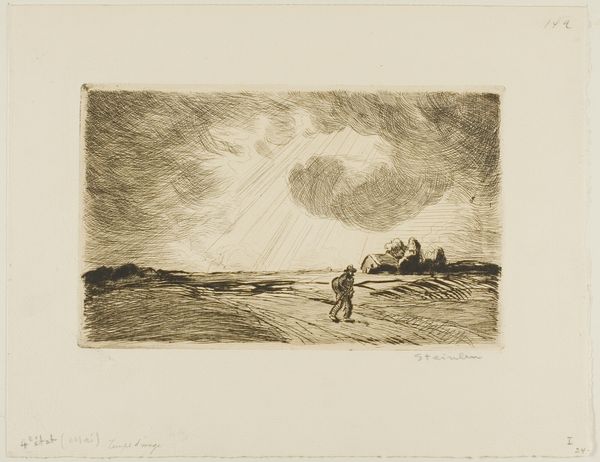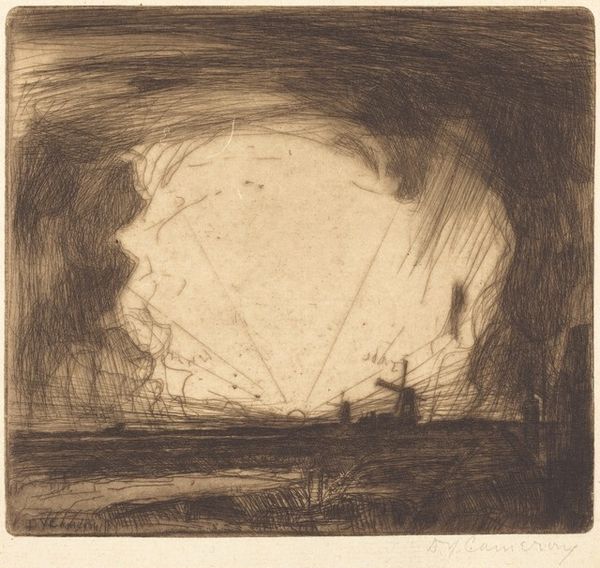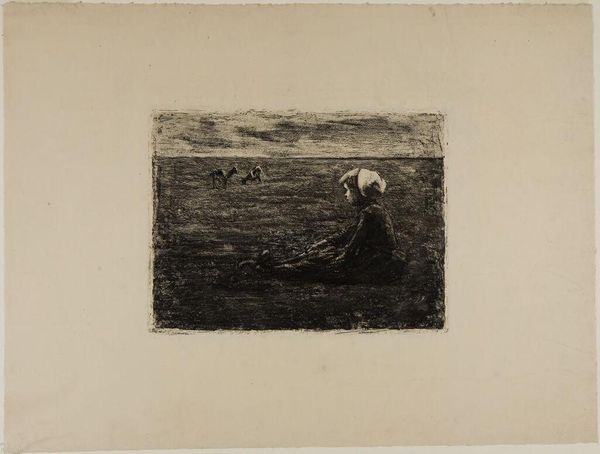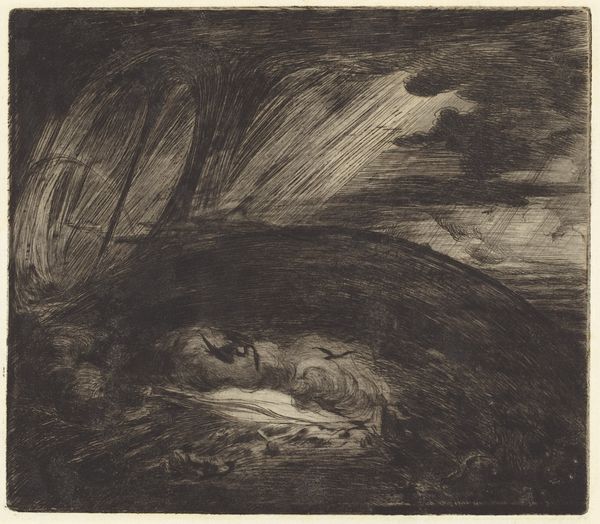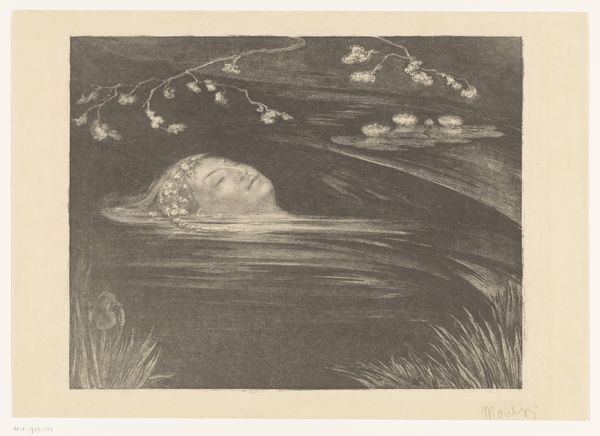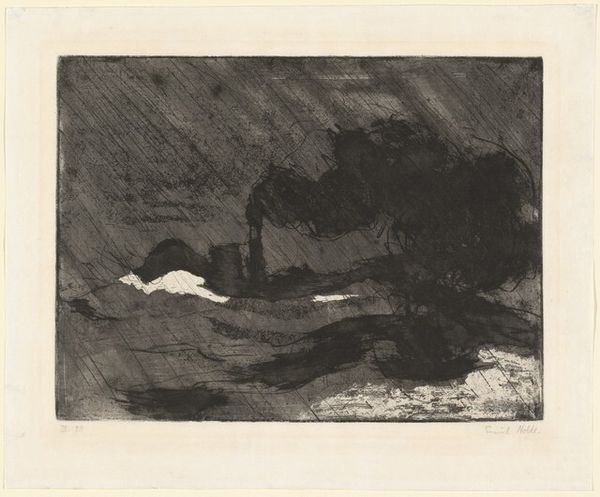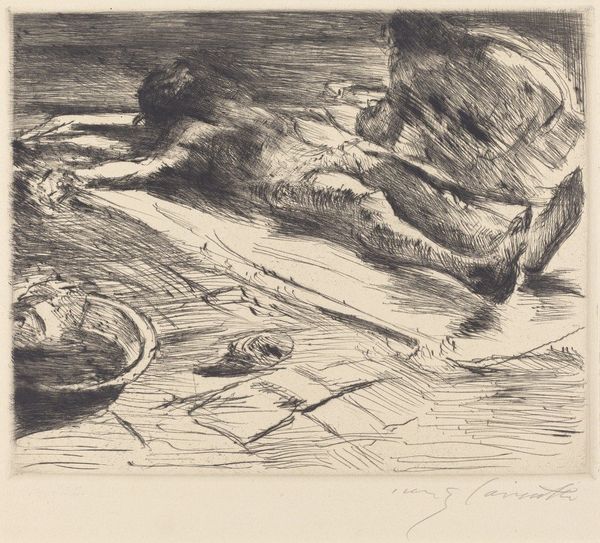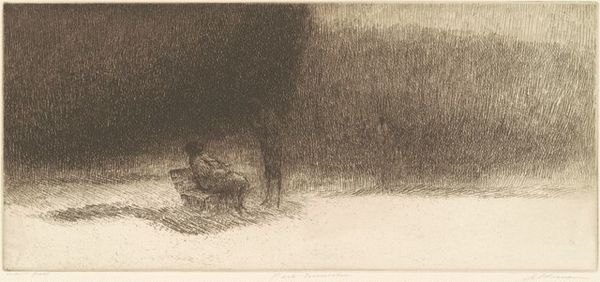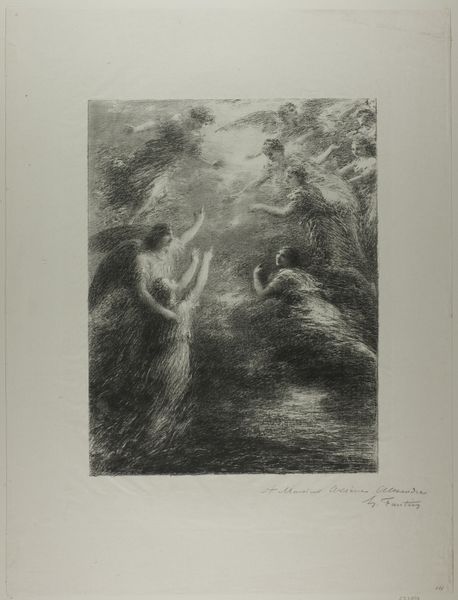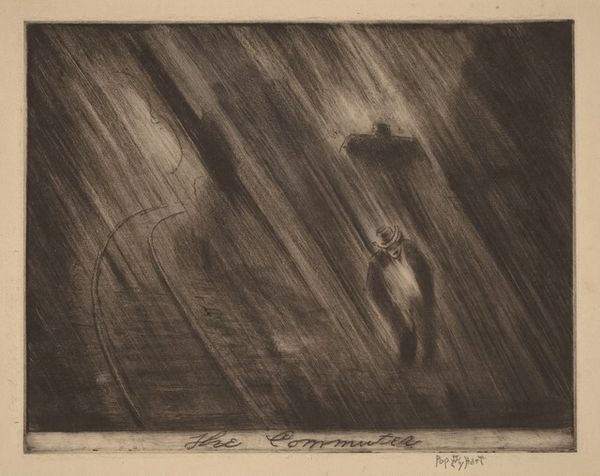
print, etching
# print
#
etching
#
landscape
#
german-expressionism
#
figuration
#
line
Dimensions: plate: 16.7 x 21.5 cm (6 9/16 x 8 7/16 in.) sheet: 31 x 43 cm (12 3/16 x 16 15/16 in.)
Copyright: National Gallery of Art: CC0 1.0
Karl Hofer created this etching, "Einsamkeit," or "Loneliness," around 1910 using a metal plate, acid, and ink. The stark scene, dominated by a solitary figure, gains much of its power from the etching process itself. Look closely, and you'll notice the density of fine, scratched lines. These weren't drawn directly onto the paper, but instead bitten into a metal plate with acid. The artist would have painstakingly covered the plate with a waxy, acid-resistant ground, then drawn through it with a sharp needle. After immersing the plate in acid, the exposed lines would be etched. Ink is then pressed into these lines, and the plate is pressed onto paper. The resulting print gains a unique texture and depth. The etching technique allowed Hofer to achieve subtle gradations of tone, creating a palpable sense of isolation. The labor-intensive nature of the etching process mirrors the emotional weight of the subject matter, transforming loneliness into a tangible, almost tactile experience. This integration of process and subject matter is a hallmark of powerful printmaking.
Comments
No comments
Be the first to comment and join the conversation on the ultimate creative platform.
